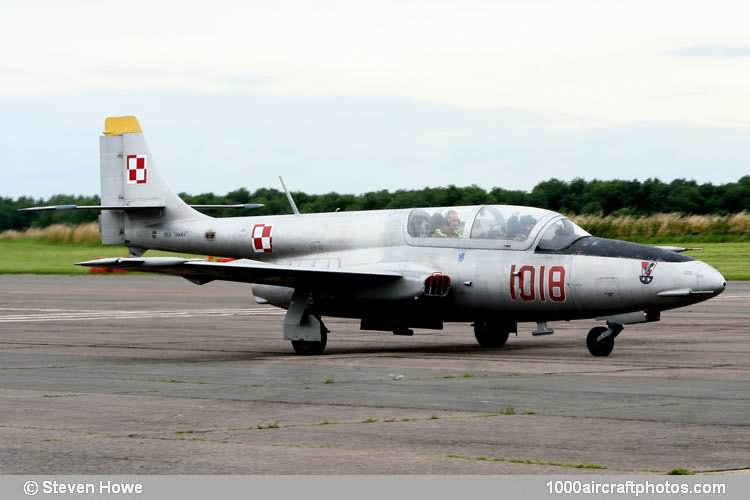01/31/2010. Remarks by Johan Visschedijk: "Designed in 1957 under the supervision of Docent Ing. T. Soltyk, the Iskra (Spark) two-seat jet trainer was produced as a replacement for the piston-engined TS-8 Bies. Four prototypes were built during 1958-59, the first of these being used for static testing. First flight, on February 5, 1960, was made by the second aircraft, followed later in the same year by the third and fourth prototypes.
Type approval was received in mid-1961, and quantity production began at Mielec in 1963. The formal handing over of the first Iskra to the Polish AF took place in March 1963, and the aircraft entered service in 1964. Early production aircraft were powered by an 1,720 lb (780 kg) st HO-10 Polish-designed axial flow turbojet engine.
In April 1964, flight testing began using the intended power plant, the more powerful SO-1; from the latter half of the 1960s, production Iskras were powered either by the SO-1 or by the modified but similarly rated SO-3.
About 500 Iskras had been built by mid-1979 in the following versions:
Iskra bis-A
Basic two-seat version, for primary and advanced training. Two under-wing hard-points for external weapons.
Iskra bis-B
Two-seat primary and advanced trainer, with four under-wing attachments for missiles or other weapons. Prototype designated Iskra 100.
Iskra bis-C
Single-seat reconnaissance version. Prototype, designated Iskra 200, first flew in June 1972. Increased fuel capacity for greater range; camera pod on starboard side of nose.
Iskra bis-D
Similar to bis-B, but able to carry a wider selection of external weapons. Prototype also designated Iskra 200. Export version, 50 supplied to Indian AF in 1976.
Iskra bis-DF
Single-seat combat and reconnaissance trainer, with increased armament capability of bis-D, plus provision for three cameras in pod on starboard side of nose.
The pictured aircraft was produced in 1978 and served with the Polish Air Force Academy with the s/n 1018 till it was struck off charge on December 30, 1995. It was registered in the UK on November 5, 2000 as G-ISKA and is kept in taxiable condition at Bruntingthorpe."
